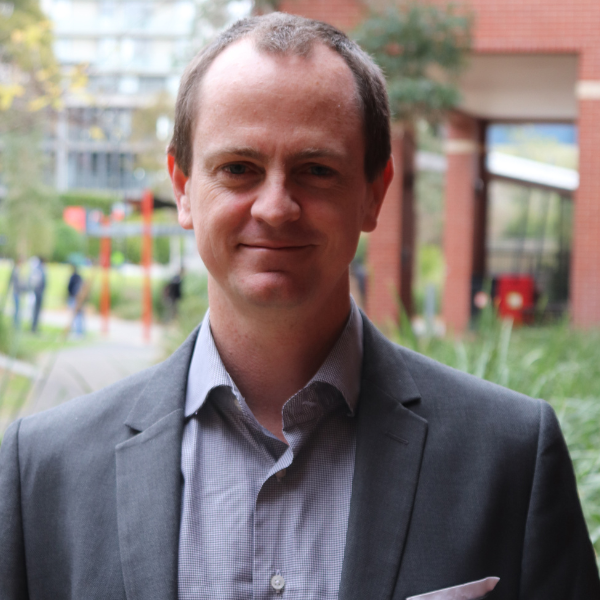
Enda Crossin
The BeLongEng Project tracks the changing nature of engineering practice over time. Its name stands for the longitudinal nature of the project, its focus on engineering, and what it means to be an engineer and belonging. Data will be collected over 20 years and used to provide evidence for policy change in engineering practice and education.
The study, led by Associate Professor Enda Crossin from the University of Canterbury, was initiated in response to the lack of empirical evidence about changes in engineering practice. An additional factor was an ongoing concern regarding the career outcomes of graduate engineers in Australia with several researchers reporting that many graduate engineers did not work in engineering occupations and might never enter the profession.
Consequently, in mid-2019, Enda wondered: “ What if we could track engineers through time to better understand how and why engineering is changing?”. The project team was established in early 2020 following discussions with relevant parties about the critical need for longitudinal research. There have been several previous attempts at engineering longitudinal projects, but most focussed on how graduates navigated the transition from study to work and finished after five years with no follow-up. Enda says this study is based on the premise that engineering career stories are interesting beyond these early years, and we need to know more than just the graduate story.
Progress to date
The first data wave for the project, which was also the recruitment drive, was completed in mid-2022. The majority of the 889 participants who completed this baseline survey were born and live in Australia or New Zealand, and represent more than 17 ethnicities. One quarter are female, which is higher than the greater engineering population of 15 percent. The participants also cover a wide range of engineering disciplines and ages. Enda says the researchers are very happy with the number and mix of participants in the study.
About 90 participants stated they no longer worked in engineering. Enda says that having these participants in the study is really important, as it allows for an understanding of what engineering skills and knowledge are being used in other roles. The study will also track whether these people return to engineering over time and what skills they bring back from other industries.
There are 600 variables in the project and, to date, only top level outcomes regarding participant demographics and engineering activities have been reported. Researchers have started looking at how the different variables relate to each other, for example, whether there is any relationship or difference between people’s intentions to stay in or leave a job, and their engineering discipline. Enda says the relationships between variables can be complex and will be investigated over time. For example, when analysing a person’s intention to leave their job, other factors such as salary, stress levels at work, and organisational support will be considered to help determine what is underpinning these outcomes. The study will also start looking at participants who are thriving in their jobs and why this is happening. Enda says researchers are keen to move away from just the deficit reporting model to also look at positive occurrences and what can be learned from them.
Interesting findings from the first data wave
One third of participants have a non-engineering qualification as well as their engineering qualification. Within this group, business and management qualifications are the most popular with about one-fifth of all participants already holding or studying towards one. This is the first time such insights into the engineering workforce have been available.
The other standout finding is that about one quarter of participants left their job at least once in the twelve months prior to completing the survey. Although this is high, Enda thinks it’s reflective of what’s been happening in the last twelve to eighteen months, and says it lines up with recent statistics from the Australian Bureau of Statistics that state 20 percent of the professional workforce, which includes engineers, left their jobs over a similar time period. Most people in this survey said they left their previous job primarily because of better opportunities. Although the survey didn’t ask what participants’ jobs were before their current job, any future changes will be tracked given researchers know where participants are currently working. Enda anticipates this rate of change in moving jobs will likely decline, given the current uncertain economic conditions.
Researchers are anticipating some changes this year, especially around where people are working. For example, Enda notes the research team expects to see a marked increase in people returning to the office with the covid response tapering.
In time, the data obtained can be overlaid with other data, says Enda. For example, if there is a change in the mix of the economy, then the survey outcomes may reflect how these changes affect engineering work, including where people are working and what work they are doing.
The next steps
The design of the second survey is about to start and will be rolled out from mid-May to the end of June 2023. It will have similar questions to the first survey, but will be easier for participants to complete because some core details have already been obtained such as their age, whether they have dependents, their engineering discipline and so on. At the end of 2023, the researchers are aiming to provide a report documenting some of the interesting findings from this next data wave, particularly some of the key changes compared with the first data wave. Enda says this study is on track to be the biggest longitudinal study of engineers anywhere.
Some questions in this next survey will be better informed as a result of the first data wave such as the size of the companies people are working in, says Enda. The researchers are also aware of the need to provide more options in certain questions. Particular areas of interest arise sporadically too. Enda notes a current topic of interest for the research team is the impact of artificial intelligence on people’s work and whether it’s changing their work. A recent area of interest in New Zealand concerns the impact of climate change and weather-related events on people’s jobs. Enda says researchers are aware people are being impacted by this now and it might be a factor requiring consideration when looking at other outcomes such as hours of work and stress.
In 2025, the third data wave will be rolled out and, at that stage, researchers will be able to start looking at the longitudinal change. This year researchers can start analysing the small changes from year to year, but Enda says the really interesting information will start to appear with this third data wave.
For more information read the BeLongEng Project Baseline Report
